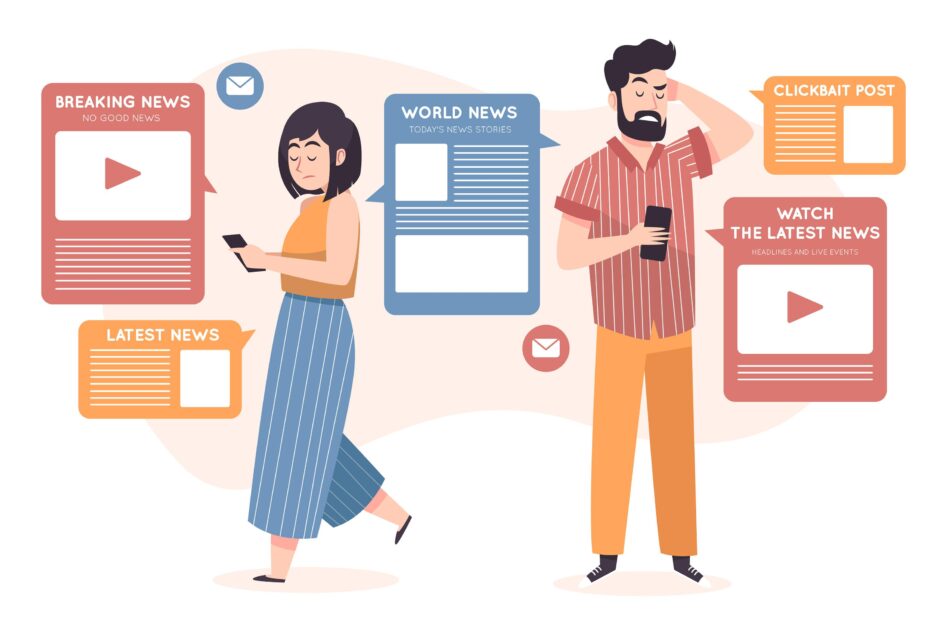Confused if you should focus on Drip campaign or newsletter? Don’t worry, you’re not alone. Its like choosing between a custom suit and a ready-made one,both have value, but one is tailored to fit your goals.
In this blog, we’ll break down the difference between drip campaigns and newsletters, their benefits, when to use each and the common mistakes to avoid.
Drip Campaigns vs Newsletters: What’s the Real Difference?
Here’s a quick comparison to explain things up:
| Feature | Drip Campaigns | Newsletters |
| Trigger | Automated, behavior-based | Manual or time-based |
| Audience | Segmented & targeted | Broader, general list |
| Personalization | High | Low to medium |
| Frequency | Ongoing sequences | Weekly, monthly, etc. |
| Goal | Lead nurturing & conversion | Brand awareness & engagement |
What is a Drip Campaign?
Drip campaign automatically sends customized emails based on the users actions, sign-ups, abandoned carts or clicks. They get messages that make sense for their journey.
Key Features of Drip Email Marketing:
- Triggered by behavior (e.g., welcome emails, re-engagement emails)
- Scheduled with timing and logic (like “wait 3 days, then send next email”)
- Highly personalized and segmented
Use Case Example:
Let’s say a user downloads your free guide. A drip campaign might:
- Thank them for downloading.
- Send an email after 2 days with related blogs.
- Offer a free trial or service consultation on Day 5.
What is a Newsletter?
On the flip side, email newsletters are like your monthly magazine, an update blast to your subscribers. They’re typically sent to your entire list on a scheduled basis and contain company updates, blog links, offers, or industry news.
Key Features of Email Newsletters:
- Manual or scheduled blasts
- Same message to many recipients
- Great for brand awareness and general engagement
Use Case Example:
A B2B company sends a monthly newsletter with:
- Market trends
- Property listings
- Client success stories
- Link to their blog or YouTube videos
Simple, informative, and consistent.
Benefits of Drip Campaigns
- Increased conversion rates due to relevance
- Helps with lead nurturing over time
- Saves time through automation
- Excellent for email marketing campaigns with intent
Benefits of Newsletters
- Builds brand credibility and consistency
- Easy to share promotions and blogs
- Drives regular traffic to your website
- Great for sharing the benefits of newsletters like product launches or success stories
When Should You Use Drip Campaigns?
Use drip emails when:
- You’re guiding users through a funnel (ex: onboarding)
- You want to setup drip campaigns for eCommerce cart recovery
- Your content needs to be behavior-specific
- You want better ROI from segmented email marketing
According to Omnisend’s 2024 report, automated emails (like drips) get 455% higher click rates than bulk emails.
When Should You Use Newsletters?
Use newsletters when:
- You want to regularly engage with your entire list
- You have company news or blogs to share
- You’re promoting events or seasonal offers
- You want to reinforce your brand voice
Fun fact: Campaign Monitor Campaign monitor states that newsletters still account for over 83% of business emails sent in 2024.
Common Mistakes to Avoid with Drip Campaigns
- Sending too many emails too soon
In drip email marketing, it’s tempting to push out a full sequence quickly. But flooding your leads can overwhelm them. Spread emails strategically. - Poor targeting
Sending the same email to every contact changes the meaning and purpose of the mail. Drip campaigns work best when they are sent according to the user’s behavior and interest. - Not aligning content with buyer journey
If you’re sending a purchase offer to a brand-new lead, you should make sure the mail is tailored in such a way that catches the user’s attention - Set it and forget it
Regularly analyse your campaigns so you know what is working and what is not and based on that, you work on new strategies.
Common Mistakes to Avoid with Newsletters
- No clear value in the content
If your email newsletters are just about company updates, then the chances of catching the user’s attention are very slim. Instead go with helpful content, offers, or industry insights. - Inconsistent frequency
Sending newsletters randomly? It can confuse subscribers. Maintain a regular schedule by either sending it once in a week, or twice in a week or on monthly basis. - Bad timing
Even the best newsletter won’t work if it lands at the wrong time. Find out the best time that works to send the newsletter to your audience. - Walls of text, poor mobile formatting, or hard-to-find CTAs can kill engagement. Use clean layouts with clear CTAs.
Final Verdict: Which One Works Better?
Drip campaigns and newsletters both have different uses.
- If you want to convert and nurture leads, you can go for drip campaigns.
- If your goal is engagement and consistent brand touchpoints, stick with email newsletters.
The real win? Getting in touch with the top email marketing agency in Bangalore to combine both and create a smart, layered email marketing strategy.
Conclusion
Whether you’re just starting or wanting to scale, understanding the difference between drip campaigns and newsletters helps you make smarter decisions for your marketing funnel.
At BleapDigital, we help businesses create engaging newsletters that actually get opened (and clicked).
FAQs
- Can I use both drip campaigns and newsletters in one strategy?
Absolutely. In fact, using both can cover both conversion and engagement goals. - How to start an email drip campaign?
You can use various email marketing tools or just reach out to BleapDigital—we’ll do it all for you. - Are newsletters outdated?
Not at all! They’re the most used form of email marketing for creating engagement within the audience. - How do I know if my emails are working?
Track open rates, click-throughs and conversions. Various tools can help you measure performance.


